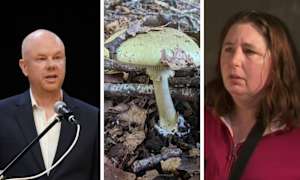THE RACV is calling on local drivers to rank Melbourne’s worst intersections.
Following last year’s My Country Road campaign the 2025 My Melbourne Road survey will help the RACV advocate for change where it’s needed most.
The Bass Highway from Jam Jerrup to Leongatha and the Phillip Island Road on Phillip Island were last year identified by the RACV as two of Victoria’s worst roads.
According to RACV Head of Policy James Williams whether you’re behind the wheel, riding, walking, or using public transport everyone’s experience on the road matters.
“We know that direct feedback from Victorians makes a difference and helps governments make decisions about where to improve our roads,” Mr Williams said.
Since the 2023 My Melbourne Road survey the RACV has tracked upgrades or planned improvements to 11 city intersections and roads that had previously been highlighted as priorities including the intersection of Princes Freeway and Clyde Road in Berwick, Nepean Highway and McLeod Road in Carrum, Wellington Road and Princes Highway in Clayton, and the Monash Freeway and Toorak Road in Hawthorn East.
Based on crash history, traffic volumes and intersection design the RACV and National Transport Research Organisation (NTRO) have identified 84 dangerous intersections.
Grouped into seven urban areas these 84 intersections saw 771 crashes over the past five years, a clear signal that more needs to be done.
The RACV is now inviting all Victorians to rank these intersections and tell the State and Federal governments what the priorities should be for road safety improvements.
The RACV will work with NTRO to propose a high-level solution for the most dangerous intersection in each urban area of Melbourne including the inner South East and Outer South East.
Mr Williams said is not just about high-profile intersections or poorly maintained smaller suburban roads, overly complex or frequently congested roads such as the Princes Highway and Springvale Road in Mulgrave also deserve attention.
“RACV’s My Melbourne Road empowers every road user to highlight areas they believe are unsafe, even if they’re not widely known,” said Mr Williams.
“Whether it’s a confusing roundabout, a blocked pedestrian crossing, or an intersection lacking turning lanes, the community’s feedback helps RACV identify and prioritise problems that data alone may not fully capture.
“Ultimately the RACV’s goal is to support a transport network that works for everyone, and the feedback helps strengthens RACV’s effectiveness in advocating for meaningful improvements where they’re needed most.”
The My Melbourne Road survey can be found at racv.com.au/haveyoursay











